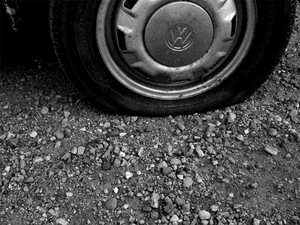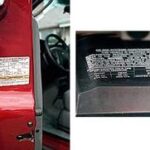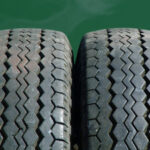Routine tire maintenance plays a vital role in the safety and upkeep of your car. Keeping your car’s tire pressure at the recommended PSI, which stands for Pounds per Square Inch, can save you money in the short and long run. Proper inflation helps your car run more efficiently and improves gas mileage. According to the U.S. Department of Energy, proper tire inflation can save you up to eight cents per gallon. In addition, tires with the proper amount of air pressure wear more evenly and are less prone to burst or rupture than over- or under-inflated tires. You will also be safer, as riding on tires with adequate air pressure means you are less likely to flip your vehicle. If you are not sure how to go about checking your tire’s air pressure, you might be pleasantly surprised to learn that it is relatively simple to do.
Get a Gauge
Purchase a digital tire gauge, which are typically much more accurate than the analog tire gauges available for use at gas stations. The old fashioned stick type of tire gauges are infamous for providing inaccurate readings, as well. In addition, using the same tire gauge every time you check your tire pressure will help ensure that you are getting a consistent reading. However, if you do not have or cannot buy a digital gauge, use whatever you have accessible. It is better to be a few pounds off than to wait to check your tire pressure and end up with a flat.
Do Your Homework
Before you check your tire pressure, it is important to know what the recommended tire pressure is for your vehicle. You can find this out by reading your car’s owner’s manual. Another place to look for this information is in the driver’s side doorjamb. There should be a brightly colored sticker that provides this information. While your tires will likely list a recommended PSI, going with the car manufacturer’s advice is always your best bet.
Keep It Cool
For the most accurate reading, check your tire pressure first thing in the morning. Tires heat up as you drive and this heat can temporarily expand the air pressure causing an imprecise reading. If you have recently driven your car, wait at least thirty minutes before you check your tire pressure.
Get to Work
Remove the small cap on the tire valve by twisting it off. Press the nozzle-like end of the tire gauge firmly onto the tire’s valve stem. You will probably hear air leaking out as you depress the valve. This should stop once you depress the tire gauge onto the valve stem. Hold the tire gauge to the valve for a few seconds. Some digital tire gauge’s may require that you press and hold a button on the gauge as well, so be sure to read the instructions prior to checking your tire pressure.
Add or Remove Air
Once you have a reading on the tire gauge, pull the gauge away from the valve. Compare the PSI reading on the tire gauge to your manufacturer’s recommendations. If the tires are low on air, fill them up until they reach the desired pressure. While you do not want to overinflate your tires, if the tire pressure is less than ten pounds higher than called for you do not need to worry. However, if the tires are severely overinflated, you can release some of the air by pressing the tire gauge slightly onto the valve.
After you check your tire pressure and taken any necessary action, screw the valve cap back onto the tire valve and move on to the next tire.






